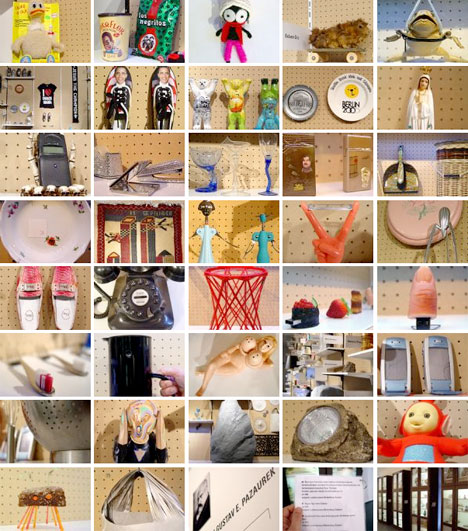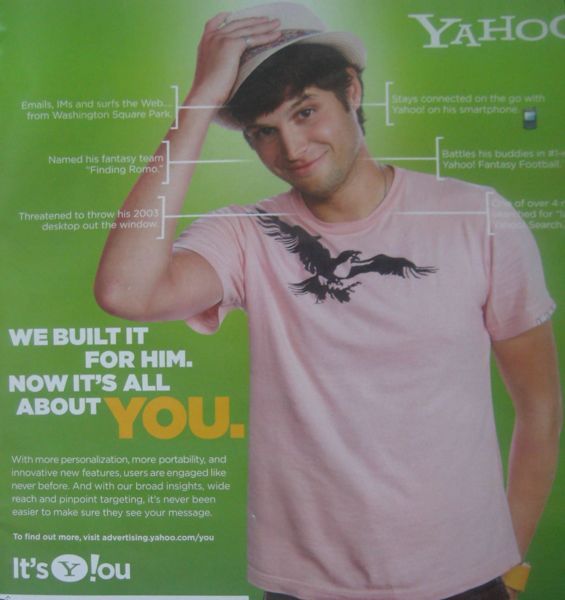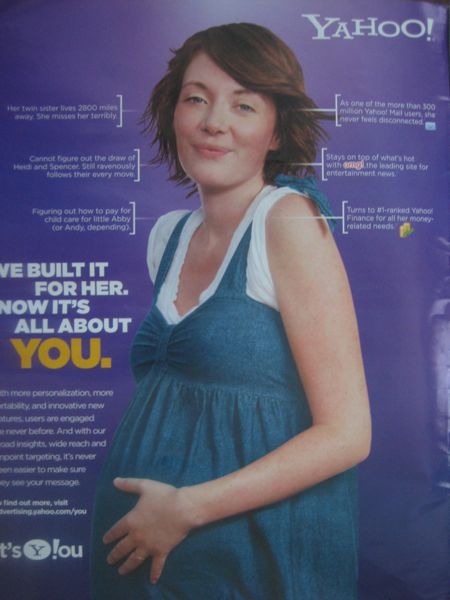
I only recently got hip to the Museum of Things, in Berlin. I’d heard of it, but a chance encounter with Garth Johnson, an incredibly nice (and smart) guy, included him really setting me straight on the Museum of Things, and the fact that I really need to go.
But while I wait for the checks to materialize that will make it possible for me to travel to Berlin, I’ve at least been able to check out the site. And then I saw this Core77 item with the above image.
from the “Bad Taste Exhibition” at the Museum of Things in Berlin. 100 years ago, Gustav E. Pazaurek started a so called “Cabinet of Bad Taste” featuring the worst of the worst items ever made. The Museum of Things recently decided to give new life to Pazaurek’s historical and extremely complex efforts in documenting material mistakes, design mistakes, decorative mistakes and pure kitsch. Aart van Bezooyen brings us this great (and terrible!) gallery of over a century of bad taste!
But wait — look at those things. Bad taste? Those look like Significant Objects to me! Couldn’t any of them, or other similar objects in the MoT’s collection, be turned into valuable signifiers of very discriminating taste? I think so. Even this one. (Um, NSFW? Sorry.)
 We were interested here at Murketing HQ when it came to our attention not long ago that James Franco, a pretty successful movie actor, was doing a stint on General Hospital. The story went that this is something he wanted to do, although it wasn’t clear to us why. Fan of the show? Curious about it as an acting experiment? Unpaid gambling debts? Hard to say. In any case he’s taken on the role of an artist — and villian — named Franco. While we did not have a firm explanation for all this, I think it’s safe to say we applauded it.
We were interested here at Murketing HQ when it came to our attention not long ago that James Franco, a pretty successful movie actor, was doing a stint on General Hospital. The story went that this is something he wanted to do, although it wasn’t clear to us why. Fan of the show? Curious about it as an acting experiment? Unpaid gambling debts? Hard to say. In any case he’s taken on the role of an artist — and villian — named Franco. While we did not have a firm explanation for all this, I think it’s safe to say we applauded it.
Today’s WSJ has an essay by James Franco, that sort of discusses his GH turn, and explains it as performance art. Actually the essay is mostly about performance art, and you can read that here if you like. Here’s all he he has to say about his soap role:
I finally took the plunge [into performance art] and experimented with the form myself when I signed on to appear on 20 episodes of “General Hospital” as the bad-boy artist “Franco, just Franco.” I disrupted the audience’s suspension of disbelief, because no matter how far I got into the character, I was going to be perceived as something that doesn’t belong to the incredibly stylized world of soap operas. Everyone watching would see an actor they recognized, a real person in a made-up world. In performance art, the outcome is uncertain—and this was no exception. My hope was for people to ask themselves if soap operas are really that far from entertainment that is considered critically legitimate. Whether they did was out of my hands.
Hm. Well, I’m not sure I agree with all of that, but I see what he’s saying. He goes on to discuss performance art and his interest in it, and doesn’t return to the GH experience until the end.
The folks at “General Hospital” informed me that in three days of filming we backlogged enough material for 23 episodes. There will be one more step. After all of the Franco episodes are aired, my character’s storyline will be advanced in a special episode filmed in a “legitimate” New York gallery. One more layer will be added to this already layer-heavy experiment. If all goes according to plan, it will definitely be weird. But is it art?
I’m not sure how I feel about the gallery angle, and I don’t really care if it’s “art” or not. But by and large this is all pretty interesting. The author tag on the story says that Franco “is currently enrolled in NYU’s MFA filmmaking program and Columbia’s MFA program for fiction writing.”
I wish I knew somebody who knows this guy. I’d invite him to write for Significant Objects. He could do so as “Franco,” if he liked.
 [The Product Is You* is an occasional Murketing series collecting advertising that is aimed at advertisers: Magazines or television networks packaging up their consumers — that is, you, the potential ad target — in ways designed to attract advertisers. ]
[The Product Is You* is an occasional Murketing series collecting advertising that is aimed at advertisers: Magazines or television networks packaging up their consumers — that is, you, the potential ad target — in ways designed to attract advertisers. ]
Meredith, publisher of magazines such as Better Homes, Parents, More, and ReadyMade, and operator of various associated online properties, here explains to potential advertisers the reason they should buy space in the Meredith universe. If you are among the “75 million women” that the ad states are Meredith’s audience, that reason is you.
Often you the media audience are pitched to potential advertisers with statistics or catchphrases. Here, a visual dominates. Please continue…
Posted Under:
The Product Is You by Rob Walker on December 3, 2009
Comments Off on The Product Is You, No. 17
 As some of you may know, Joshua Glenn and I recently launched Significant Objects, Volume 2.
As some of you may know, Joshua Glenn and I recently launched Significant Objects, Volume 2.
In this sequel to our much-discussed experimental inquiry into the relationship between narrative and value, we plan to publish 50 stories (and auction off 50 objects) with proceeds at the end going in what we hope is an impressive lump sum to 826 National, a nonprofit that tutors students age 6-18 in creative and expository writing. Bid early and often to support this excellent cause!
We’re signing up contributors and editing stories — so visit the site, now and in the weeks ahead (or sign for the email, or do the Facebook thing or the Twitter thing), for stories about thrift-store objects from Bob Powers, Amy Fusselman, Debbie Millman, Douglas Wolk, Barbara Bogaev, and many more. We’ll also be publishing stories by some of the finalists from our Slate contest, plus a few favorite contributors from Volume 1 will be back for an encore.
And check this out: For our first story, contributor Neil LaBute has made a very cool offer. Not only will the winning bidder get the Significant Object + story — that generous and tasteful individual will also receive a copy of the story hand-written by LaBute!
Even if you don’t bid we really need your help spreading the word. Tell friends, tell strangers, blog about it, tweet about it, link it up. Let’s make this fund-raiser version of the project a success! Thanks.
Oh, and we’re selling mugs. Get yours here.

We better not find one of these in a thrift store any time soon.
Posted Under:
rw,
Things/Thinking by Rob Walker on December 3, 2009
Comments Off on Significant Objects V.2
I don’t know if you have a website, or, if you do, whether you have some sort of plug-in that tells you about search terms that led people to it. I do, on both counts. Normally I don’t notice the latter, but today I did. Here’s what it says:
murketing, mongols mc, rob walker, advertising, donks
I think it caught my eye because of “mongols mc.” Odd that more people land here as a result of searching that phrase than, oh, I don’t know, my name. Particularly because I didn’t even recognize the phrase “mongols mc.” I had to search my own site to find it! I came up with this item, which I barely remember.
If you’re curious about “donks” — here‘s what that’s about. I really am interested in donks.
Posted Under:
Murketing.com by Rob Walker on December 2, 2009
Comments Off on Search me
The most-emailed story on Yahoo right now is headlined “Loneliness Spreads Like a Virus.”
Okay, silly research, and fatuous deployments of the “virus” metaphor, are nothing new. But really, is this “finding” a prank?
The upshot: A lonely person is likely to lose touch with another person, who in turn gets cut off from others, and both end up on the fringes of a social group.
Well, then, uh, problem solved, am I right?
Really, even if there’s some sort of truth in the idea that loneliness spreads from person to person in the manner of the flu — wouldn’t that problem, by definition, pretty much take care of itself? How are the lonely contagion-carriers going to be spreading their awful loneliness among their non-existing social networks? What do when we identify them? Isolate them? I thought the were already isolated.
Am I really supposed to be worried about spending too much time with people who have been “cut off from others”? Is that the cure to this supposed epidemic? Are we to save ourselves from the ailment of people-avoidance by … avoiding people?
More:
A person’s loneliness depended not just on his friend’s loneliness but also on his friend’s friend and his friend’s friend’s friend.
How did they find these lonely people with such robust social networks, anyway? Reading this makes feel like lonely people have more friends than I do. In fact it makes me kind of lone–
Oh my god.
I’ve caught it.
 SLEEPING GAG:
SLEEPING GAG:
A product idea becomes a joke — and then a product.
A lot of ThinkGeek’s customers, fooled or not, didn’t simply want to appreciate the funny idea of a Tauntaun sleeping bag. They wanted to own one. And said so in tens of thousands of e-mail messages and phone requests.
Read the column in the November 29, 2009, New York Times Magazine, or here.
Discuss, make fun of, or praise this column to the skies at the Consumed Facebook page.
Posted Under:
Consumed by Rob Walker on November 28, 2009
Comments Off on In The New York Times Magazine: Tauntaun Sleeping Bag

[The Product Is You* is an occasional Murketing.com series collecting advertising that is aimed at advertisers: Magazines or television networks packaging up their consumers — that is, you, the potential ad target — in ways designed to attract advertisers. ]
Just as Bravo pushes the idea that its viewers are “affluencers” (well-off and inflential people, desirable to advertisers), the WE network concocts a name for those who watch its programming: They are “I Do-ers.” Does this mean they are overly willing to get married??
Not exactly. Please continue…
Posted Under:
The Product Is You by Rob Walker on November 25, 2009
Comments Off on The Product Is You, No. 16
Okay, then, an update on the recent-sh post, titled The Marketplace of (Other Peoples’?) Ideas. Basically this was me thinking out loud about indie creators who feel their work is getting ripped off by big companies, and what if anything can be done about it. Notably:
A prominent theory of Web-thought is that such exposure [of alleged ripoffs, online] ought to spark some kind of response and ideally resolution of the specific instances — and, you would think, a downtick in the number of such instances. And yet it seems routine.
I had a number of private conversations with various folks about this post after it went up. The upshot is as follows. Please continue…
I don’t know how closely you’re following the inquiry over in Great Britain about that country’s decision to involve itself in the Iraq war. And I don’t have much to say about that.
But hey, how about the logo! What do you think of the type treatment? Is this going to make the Iraq Inquiry the breakout inquiry of 2010?



No column in the NYT Mag today, but of course you should go buy the Sunday paper anyway. As always you can check out murketing.tumblr.com or facebook.com/consumed if you’re bored, I tend to update those even when I’m too busy to say anything here, as I have been lately. I hope to get some half-written stuff finished and onto this site in the week ahead, but then I hoped that last week, too.
Meanwhile I’ve noticed a few “Stand By” graphic treatments lately. My opening slide when I was doing Powerpointy self-promotion in connection with Buying In was in fact the classic stand-by color bars. Often the A/V guy would find it confusing. I’ve wondered if anybody else even remembers the image, so I guess I’m glad to see evidence that people do. Anyway if you happen to know of more examples I’d love to see them!

Sewing Room TV Cover by modernjax

By Frank Chimero

Also by Frank Chimero, whose work is excellent.
 REALITY BYTES
REALITY BYTES
Does ‘augmented reality’ technology help us see deeper into what’s before our eyes?
This phrase has become one of the pervasive buzz concepts of 2009, and as is often true in such cases, it seems to describe a variety of manifestations from the practical to the pointless to the pie in the sky….
Read the column in the November 15, 2009, New York Times Magazine — a special entertainment-focused issue — or here.
Discuss, make fun of, or praise this column to the skies at the Consumed Facebook page.
Posted Under:
Consumed,
Entertainment by Rob Walker on November 14, 2009
Comments Off on In The New York Times Magazine: Augmented Reality
I’m on an unsubscribe binge. So many people have put me on so many email lists it’s just gotten overwhelming. I have to do something.
Naturally, I feel like a jerk about it. I imagine these people checking their unsubscribes (as I’ve done during periods when I’ve run email lists) and wondering: What happened? Why doesn’t he like me anymore? Is there something wrong with these email updates, or with the recent iteration of whatever work is described therein?
And I totally understand why people put me on their lists in the first place — without asking (this is routine). Usually it’s someone I’ve written about. So: If I was interested once, won’t I be interested forever? And in a way, I am interested. But I’ve written hundreds of columns (and articles besides) and getting weekly or monthly updates from everybody, ever, is just insane. Not to mention people I’ve just met, liked, and given a business card.
Still, it feels horrible to unsubscribe. Listen, all of you: It’s nothing personal! I’m sorry…
Posted Under:
"Social" studies by Rob Walker on November 12, 2009
Comments Off on Unsubscription notice
James Ledbetter of The Big Money posts about a recent appearance he made on CNBC, debating with a professor about the claim that Wal*Mart, by lowering prices, is a benevolent force in the American economy, and American life in general. The prof says yes. Ledbetter says, basically, that if one takes a broader view, not everything that lowers prices is necessarily an unalloyed good.
I cringe to provide a link to the segment, but here it is. My fellow guest was a business professor from the University of Michigan, who has advocated that Wal-Mart should be given the Nobel Peace Prize. I tried to argue that it’s strange to say that anything that lowers prices is intrinsically good. [CNBC co-anchor Dennis] Kneale interrupted me with the comment “It is!”
Well, if unemployment is good, then slave labor is better, right? If Wal-Mart could lower its labor costs to zero, imagine how rock-bottom its prices could be. I asked Kneale: “If [a $35] DVD player is produced by slave labor in China, is that a good thing?” His reply: “Yeah, it’s a real good thing, if I can buy it for $35.”
It seemed hard to believe that someone would actually say this on television.
Agreed! In fact I had to watch the segment because I found it hard to believe! The exchange Ledbetter highlights comes at about the 3:40 mark.
I guess the explanation for Kneale’s callous statement is that he wasn’t actually listening to anything Ledbetter said. Which is the real problem with the entire segment. In some ways what’s most startling about it (I haven’t watched CNBC in years) is that both CNBC anchors completely sided with the professor from the beginning, and basically the whole thing consisted of all of them berating Ledbetter for daring to say anything that challenge pure-free-market doctrines, or that might make somebody, oh, I don’t know, actually think. In this bit they pivoted to demanding to know what proof Ledbetter had to back up his hypothetical — a tired rhetorical sleight-of-hand tactic designed to divert the conversation in an irrelevant direction (it was a hypothetical, not an allegation, that the CNBC guy responded to).
The prof has a point, early in the segment, when he says it’s not Wal*Mart that drives mom and pops out of business — it’s consumers, who choose to shop at Wal*Mart because its prices are (or generally seem) lower. Which is why it would be a good thing if more people were more thoughtful about more of the consumption decisions. That’s essentially the direction Ledbetter might have pushed a viewer or two … if he’d been allowed to express his views.

[The Product Is You* is an occasional Murketing series collecting advertising that is aimed at advertisers: Magazines or television networks (or in this case a Web company) packaging up their consumers — that is, you, the potential ad target — in ways designed to attract advertisers. ]
In today’s installment, Yahoo enlightens the advertising public (meaning the public that is made up of advertising/marketing people) about its users. The pitch explains: “We built it for him; Now it’s all about YOU!” That is, Yahoo is “all about” potential advertisers.
Above, a fellow I will call Yahoo Dude. And below, Yahoo Mom. They’re a somewhat disconcerting pair in that Yahoo Dude, even at a glance, seems a bit feckless to be a father. Kind of like that Levi Johnston guy. And Yahoo Mom looks about the same age. Or maybe she’s younger — sort of a Juno vibe? (I never actually saw Juno.) Anyway I don’t think we’re supposed to see them as a couple.
Point is: More after the jump.

Please continue…




 "
"


 [
[

 SLEEPING GAG:
SLEEPING GAG:



















 Kim Fellner's book
Kim Fellner's book  A
A